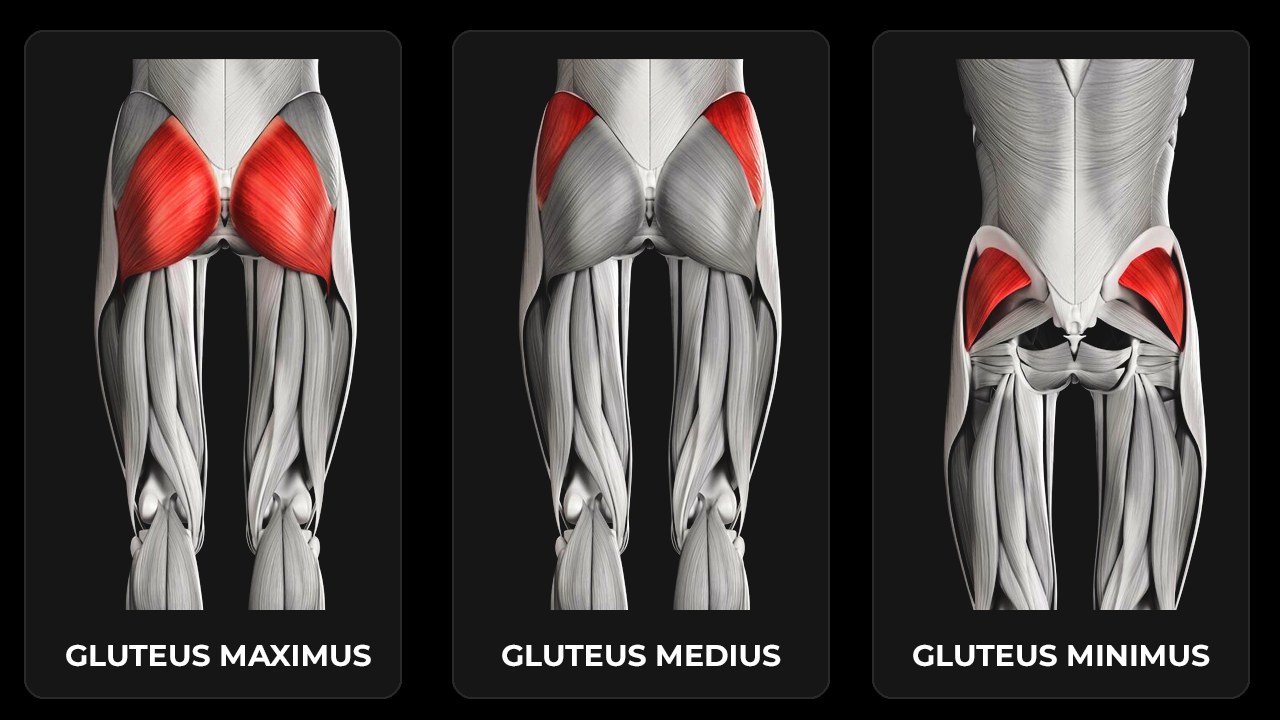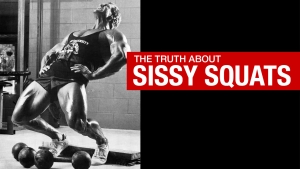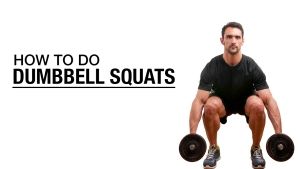
HOW TO ACTIVATE THE GLUTES
When I step into a gym, one of the most common mistakes I see is the neglect of the glutes.
Sure, some people might be solely focused on getting a bigger butt, but the glute work they are doing shows an obvious inattention to strengthening the glutes, especially into extension.
What’s more, when people do work out their glutes, they are usually only focusing on heavy compound lifts and the gluteus maximus.
Guys, whether you are not getting into full extension, only focusing on one part of the muscle, or avoiding glute work altogether, you’re putting yourself at risk.
Risk for weak glutes, muscle imbalances, and overall flat butt muscles.
Today, I’m going to show you something simple that you could do every single day to build not just strong glutes but better-looking ones.
These same movements will also correct a lot of disfunction that tends to lead to hip and lower back pain.
Let’s take a closer look at the anatomy of the glutes, why it’s important to go beyond the glute maximus, and the best glute activation exercises.
ANATOMY OF THE GLUTES
Before we get into my favorite butt exercises, I want to help you understand what the gluteal muscles are, where you can find them, and how they work.
Knowing where the glute muscles are will help you develop a stronger mind-to-muscle connection. This means you’ll be able to tap into a superior glute muscle activation.
In turn, this is going to produce an intense glute muscle contraction, which is what you want if your goal is a bigger, stronger, and toned butt.
Here’s a breakdown of the three muscles that make up the glutes:
GLUTEUS MAXIMUS
The gluteus maximus is one of the largest muscles in your body. It’s connected from your lower back and hip bone all the way to the top part of your thigh bone and a tough strip on the side of your leg.
One of the major muscles in your body, the glute max does a few important things.
Its main job is to help straighten your hip joint when it’s bent. This is super important for when you’re standing, running, or jumping.
It also helps twist your leg and foot outward and move your leg towards or away from the middle of your body.
Plus, this muscle helps keep you standing upright. That’s why having a strong gluteus maximus is good for everybody, not just folks who play sports.
GLUTEUS MEDIUS
As I mentioned above, when most people talk about glute workouts, they usually think of the gluteus maximus. And that’s understandable because it takes up the most space on your butt.
But there’s another glute muscle that’s equally as important called the gluteus medius. If you skip out on training this muscle while overtraining the glute max, you increase your risk of muscle imbalances, strain, and lower back pain.
The gluteus medius is found on the side of your hip. It stretches from your hip bone to the top part of your thigh bone.
This muscle helps lift your leg to the side (like when you’re doing a Side Leg Lift). This is really important for keeping your balance when you’re doing things like walking or running.
It also helps turn your hip in and out while keeping your leg from moving too much towards the middle of your body.
Just like the glute max muscle, having a strong gluteus medius can help you have better posture, move more efficiently, and lower your chances of getting hurt.
GLUTEUS MINIMUS
Right underneath the gluteus medius, you have the gluteus minimus. It’s the smallest one of the three butt muscles.
It starts from the outer part of your hip bone and goes down to the large bumpy part that you can feel on the side of your hip.
This little butt muscle has a big job. It helps lift your leg to the side, turn it inward, and it also helps keep your hip stable when you’re walking or running.
WHY FOCUS ON PROPER ACTIVATION?
Some of you might be saying, “Jeff, I’m moving the weight, I feel the burn – What’s the big deal with proper activation?”
Guys, when it comes to your glutes, proper activation is essential if you want to see results-.
This is your center mass and unless you start paying attention to actively contracting it, you’re going to be leaving a lot on the table.
Once you start putting in the work, your mechanics will improve, and you’ll be stronger. You’ll plug those energy leaks that happen when we loosen everything up in the kinetic chain.
Here are the benefits of glute activation and why you should focus on correcting poor glute activation:
RESET YOUR POSTURE
Your glutes are a part of your entire core muscles, and all movement originates from your core. It’s also where you can check back to reset a movement, especially your posture.
Let’s take the squat as an example of what I mean when it comes to core focus.
Sometimes, our hips can stray during a Barbell Squat, especially when we move into that upright position during the concentric portion of the lift. Maybe they open a little bit, or they go the other way. It depends on imbalances in the hip and how the muscles in the posterior chain are firing together.
One thing you can do to reset your posture, correct muscle imbalances, and continue doing the exercise properly is to focus on your glutes.
If you squeeze your glutes together, you’re going to re-center yourself and be in alignment again, ready for the next squat.
PROTECT YOUR LOWER BACK
Another reason to focus on how to activate glutes properly has to do with your lower back.
If we don’t get extension through the hips, we’re going to get it somewhere else. We’re going to get it through the low back.
I see this all the time.
If I’m doing a deadlift and I come up, but I don’t get into full extension, I’m putting the load on my lower back.
A lot of people will extend through the lumbar spine so that it looks like they’ve reached full extension.
Obviously, this is not what we want.
By knowing how to properly activate the glutes, you can drive your hips into full extension, putting the load where it’s meant to go.
DON’T FORGET ABOUT THE GLUTE MEDIUS
Glute activation programs go beyond the glute maximus. Remember how I mentioned two other glute muscles? Well, they need attention too!
If you’re just focusing on Lunging, Squatting, Deadlifting or Leg Pressing right now, then you’re missing out on the frontal plane abduction that we get from the glute medius.
By incorporating some of the glute activation exercises below, you’ll be able to bring your glute medius up to speed.
And that’s exactly what we’ll be doing but first, I want to see if you can even activate your glute muscles.
HOW TO TEST YOUR GLUTES
Maybe you’re someone who feels like they’re doing everything correctly when it comes to glute development.
You’ve been dedicated for weeks or even months, performing exercises such as Glute Bridges, Barbell Hip Thrusts, Barbell Squats, and Deadlifts.
You’re eating nutrient-rich foods, with a balanced caloric intake designed to foster muscle growth without promoting fat gain.
Despite the effort, maybe you’re not noticing any significant changes.
Before we delve into the optimal glute activation exercises, I want you to take a quick test.
Put your smartphone away and position yourself on the floor.
Get down on all-fours, fully extend one leg back as far as possible, then lift it directly towards the ceiling.

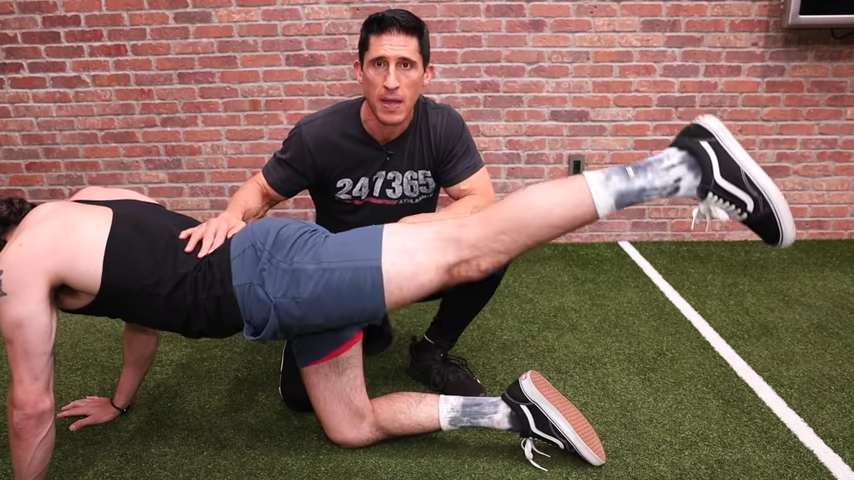
The aim here is to feel an intense contraction in the gluteus maximus fibers.
Can you feel it?
The sensation should be comparable to clenching your bicep as hard as you possibly can. If you’re not experiencing this, that means your glutes aren’t firing.
Oddly enough, even if you are experiencing this, it might be because you performed the test without proper form.
Some of you may have noticed this sensation due to the slight rotation of your leg.
So, try it again, but this time, look back and verify whether your toe is pointing directly downwards or sideways.
If you point your toes sideways, you’re merely engaging the gluteus medius or gluteus minimus.
This test’s focus is not on the collective glute muscles, but solely on the activation of the gluteus maximus.
If you lack proficient neuromuscular control of the glute max, it diminishes the effectiveness of the glute exercises you’ve been performing.
Not only that, but it also converts you into a back-dominant extender instead of a glute-dominant extender.
In other words, you’re putting the load on to your lower back, not your glutes. That means all back pain and no glute gains.
Once this occurs, especially when paired with heavy weights, you’re inviting potential low back pain.
So, how can we correct this?
BEST GLUTE ACTIVATION EXERCISES
If you didn’t feel anything from the glute activation test – or felt it because your foot was turned out – it’s time to learn how to activate your glutes.
I suspect the reason you aren’t feeling that glute contraction is because the mind-body connection is so dormant. These exercises will solve that problem.
Here’s a super effective glute activation exercise routine. We’ll start with the gluteus maximus and work our way to the gluteus medius.
FULL EXTENSION STEP-UPS

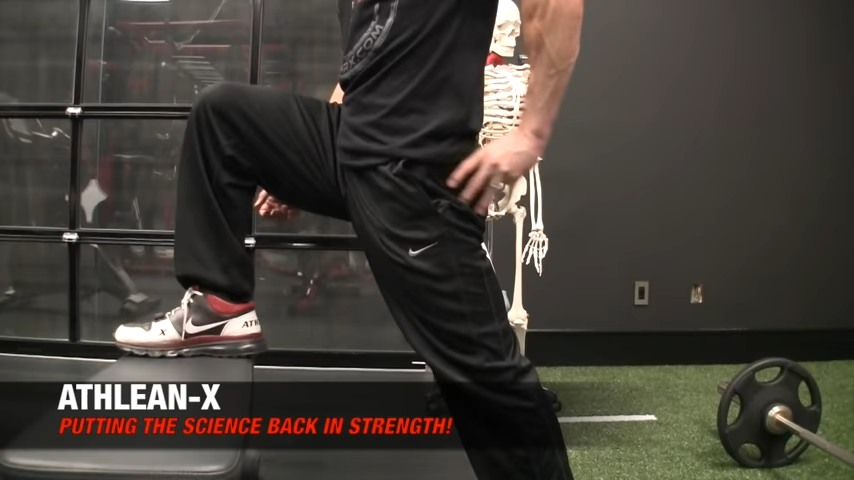
HOW TO DO IT: Start by choosing a sturdy bench or step box. Stand a foot away from it with your feet shoulder width apart. Place your right foot firmly on the step, ensuring your knee aligns with your foot without surpassing your toes. Engage your right foot to lift your body until you’re standing on the box then bring your left knee up into knee drive to the height of your waist. At the top of the lift, engage your glutes and push your hips forward into a full extension, creating a straight line from your head to your left heel. Lower yourself by bending your right knee and step back onto the floor with your left foot. Repeat the exercise on your right leg first, then switch to the left leg. Always prioritize slow, controlled movements over speed, and maintain proper alignment to avoid injuries.
WHAT MAKES IT EFFECTIVE: This is a crucial glute activation exercise. The traditional Step-Up exercise forces the hip to move into a full extension, ensuring the glute muscles are firing.
RESISTANCE BAND KICKBACKS

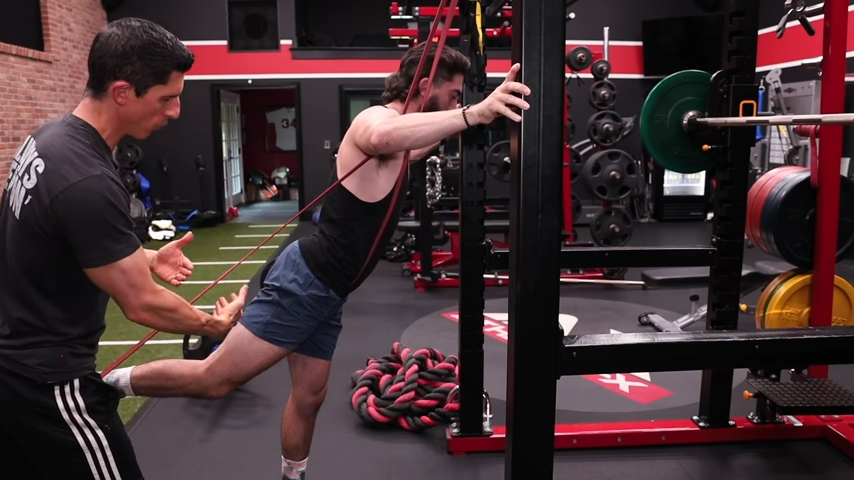
HOW TO DO IT: Begin the exercise with feet hip width apart. Place your foot in a circular band looped over a pull-up bar. Allow your hip to rise as high as possible from a standing position. These glute stretches won’t last long because you’re going to engage your glutes and flex your hip. Push down against the band into an extended position, then push against the band forcefully back. Simultaneously, lift your leg against gravity to stimulate the glute muscles further. Slowly return to the full-upright standing position and begin again. Aim for 10-15 marches as long as you’re able to maintain perfect form.
WHAT MAKES IT EFFECTIVE: The isolated hip extension achieved with this exercise makes it an excellent addition to your glute training routine due to the significant range of hip extension motion involved.
WALL SINGLE-LEG GLUTE BRIDGE

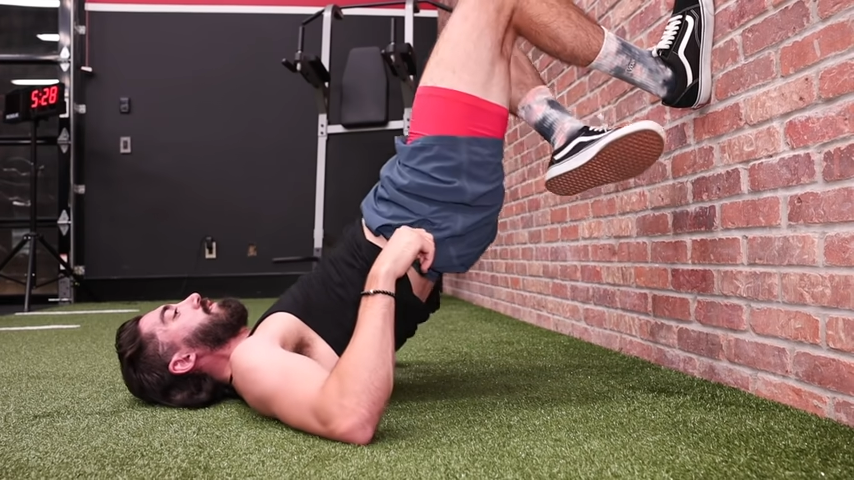
HOW TO DO IT: Start by positioning yourself against a wall with feet elevated. Bend the leg you’re not working out and bring it down and under. As you do this, ensure you’re as close to the wall as possible to increase action in the hip flexors. The closer you are, the more you’ll mimic the benefits of a Banded Pulldown. The way you push through your foot is crucial. Avoid pushing through your heel or pulling down the wall, as this can over-activate your hamstrings, which is not the aim. The focus should be on driving the gluteus maximus through hip extension. Therefore, press your foot flat into the wall, using every inch of your foot’s sole. Rise slowly, concentrating on engaging your glute max. Hold at the peak for a couple of seconds, keeping the upper half of your body on the ground, then lower to the starting position.
WHAT MAKES IT EFFECTIVE: This exercise resembles an Elevated Bench Glute Bridge, but with a twist. The focus on using only the glute max to achieve hip extension makes this an ideal exercise to learn how to activate your glutes.
HIP DROP AND LIFT

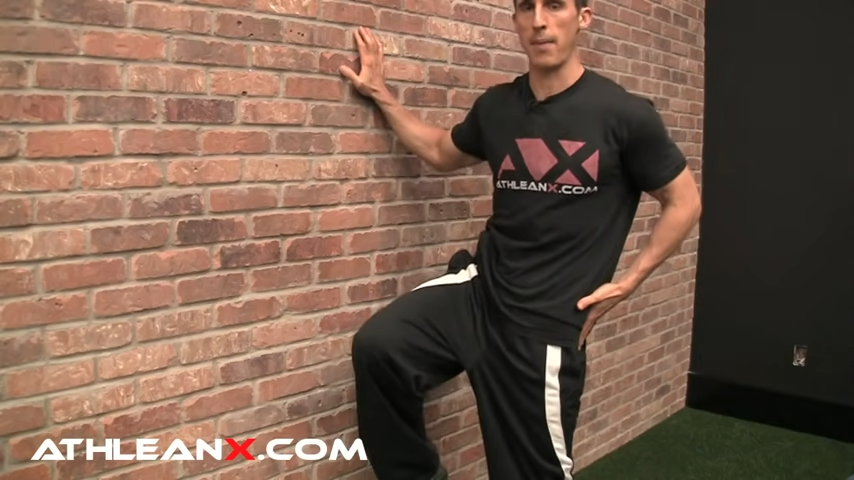
HOW TO DO IT: Now we are moving into our series of exercises focusing on the glute medius. Begin by lifting the leg closest to the wall and bending the hip and knee at 90-degree angles. From here, allow your left leg muscles to get lazy as you let your pelvis drop to the right. You should now see that your pelvis and hips are slanted down and to the right. The only way you will be able to restore a level pelvis is to slowly contract the glute medius on the left leg. Try to slowly contract this muscle to lift the hips back up to level. You should feel an intense glute squeeze on the left leg if you are doing this correctly. Shoot for 10-15 repetitions.
WHAT MAKES IT EFFECTIVE: This is one of my go-to amazing glute activation moves. This exercise directly targets the glute medius, demanding activation in order to level out your hips.
STABILITY BALL HIP DROP AND LIFT

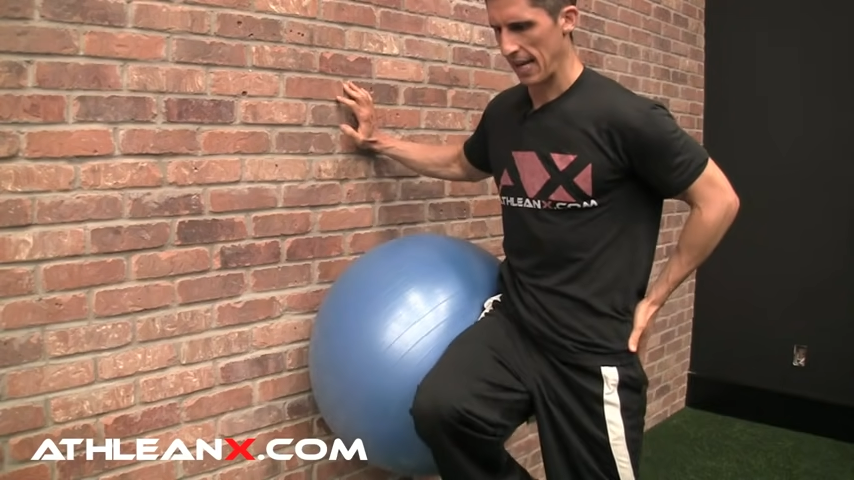
HOW TO DO IT: If the standard Hip Drop and Lift is too easy, you can simply place a stability ball on the wall on the outside of your non-working leg. Following the same form and execution. Focusing on the downward movement, you will now use the resistance of the ball to make the driving of the outside hip even harder. You can even use a foam roller in place of the stability ball.
WHAT MAKES IT EFFECTIVE: The resistance from the stability ball presents a new challenge, demanding more from the glute medius.
RESISTANCE BAND HIP DROP AND LIFT


HOW TO DO IT: Take the same form as above but wrap a resistance band around your hip. Pull against the band as you drop and lift your hip.
WHAT MAKES IT EFFECTIVE: This is the advanced version (and a killer glute exercise), and it places a ton of resistance on the glute medius.
TOE STAB HIP RAISES


HOW TO DO IT: Lie on the ground on your side so that your leg is in front of your body. This is the active position. The goal is to have internal rotation to target the glute medius. Get your foot about 30 degrees in front of your body and try to point your toe straight down into the ground. Imagine you’re taking your toe and trying to stab it into the ground. All you’re doing is keeping a nice, stable upper body and you’re going to lift your leg up as high as you can into abduction at the hip. Now focus on coming up and making sure every repetition is a purposeful contraction of the glute medius. Try to complete at least 10-15 reps.
WHAT MAKES IT EFFECTIVE: It’s not a race. I’m looking for excellent quality contractions. Given the side position you take on the floor, your gluteus medius is immediately activated. The goal is to move slowly to really light it up.
TOE UP HIP RAISES


HOW TO DO IT: Continuing to lie on your side, you’re going to favor your body forward a bit more while moving your leg behind your body. Turn the toe up and now lift up. Focus the contraction on the glute medius and move slowly. Return to the original position slowly and begin again. You probably won’t be able to do many repetitions with this one and that’s okay. Focus on the form and execution of the exercise.
WHAT MAKES IT EFFECTIVE: By turning the toe upward and moving the leg behind the body, you are directly targeting the glute medius muscle. But this one is a challenging exercise so take it slow and aim for quality reps.
TOE DOWN HIP SWINGS

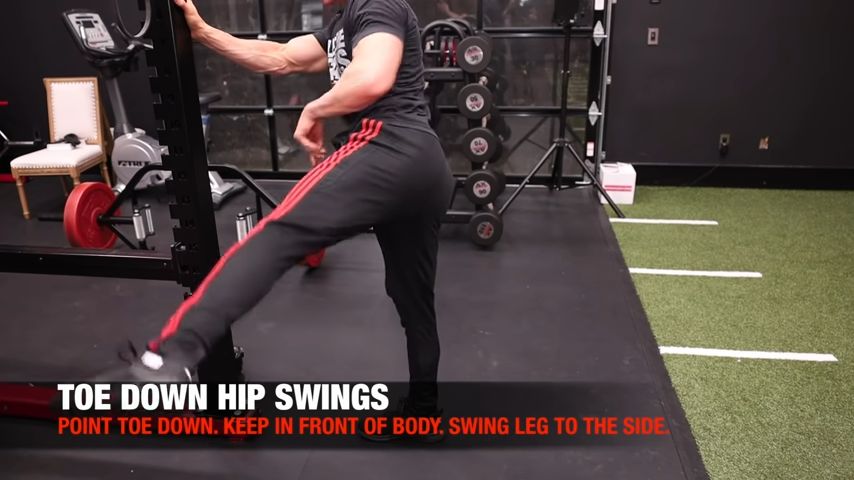
HOW TO DO IT: Square your hips in front of a bar or supportive structure. Put your leg in front of your body and turn your toe inward. Bring your leg out to the side into abduction similar to a leg swing. As I swing up, the hip on the other side comes over. I let it drop and then I let it come over, I let it drop and I let it come over. Be sure to keep the toe pointing down throughout the exercise.
WHAT MAKES IT EFFECTIVE: The standing version is slightly better than the lying version because it’s a weight bearing closed chain exercise, ensuring better activation.
TOE UP HIP SWINGS


HOW TO DO IT: Angle your body towards the wall or support structure at about 45 degrees. Then move your leg behind your heel, turning it out to the side. Your toe will be pointed outward. Rotate your body and move your leg upward as you do. Give it a good glute squeeze then slowly lower the leg down. These are tough so be sure to spend extra time getting the form right even if it means you perform fewer reps.
WHAT MAKES IT EFFECTIVE: This is one of my favorite glute finishers. Just like the lying down version, you’ll feel this butt squeeze directly in your glute medius with an intense contraction. That said, you might not be able to perform that many and again, I’m okay with that. Focus on quality reps here.
They might be overlooked, but that doesn’t mean they aren’t important.
Guys, you need to show more attention to your glutes, and not just with Squats and Hip Thrusts. There are two other parts of the muscle – glute medius and glute minimus – that also need some TLC.
The exercises I’ve shared with you are designed to ensure optimal glute activation in all three parts of the muscle, ensuring you’ll see some serious results if you stick with them.
For a comprehensive strategy aimed at enhancing lean muscle and strength throughout your body, explore our ATHLEAN-X programs. Pick the one that aligns best with your goals and available equipment.

- Neglecting glute exercises, focusing only on one part of the muscle, or avoiding full extension can lead to muscle imbalances, dysfunction, and a flat butt.
- The glute muscles include the gluteus maximus, gluteus medius, and gluteus minimus, all of which serve essential functions.
- The gluteus maximus helps straighten your hip joint when it’s bent, twists your leg and foot outward, and helps you stand upright.
- The gluteus medius helps lift your leg to the side, turns your hip in and out, and assists in maintaining balance during movements like walking or running.
- The gluteus minimus, the smallest of the three muscles, helps lift your leg to the side, turns it inward, and keeps your hip stable when you’re walking or running.
- Proper glute activation is key for improved posture, protection of the lower back, and for effectively engaging all parts of the glute muscles.
- Glute activation exercises should be chosen based on the part of the glute muscles you’re trying to target.
- Full Extension Step-Up and Resistance Bands Kickback are recommended for the glute maximus, while Hip Drop and Lift, Toe Up Hip Raises, and Toe Down Hip Swings are suggested for the glute medius.
- To fix inactive glutes, build a strong mind-to-muscle connection, and consider bodyweight and resistance band exercises.
- The best glute activation circuit includes Full Extension Step-Up, Resistance Bands Kickback, Wall Single-Leg Glute Bridges, Hip Drop and Lift, Toe Stab Hip Raises, Toe Up Hip Raises, Toe Down Hip Swings, and Toe Up Hip Swings.
GLUTE ACTIVATION EXERCISES FAQS
You want to select the right exercises based on the part of the glute muscles you’re trying to target. There are two primary areas to focus on: the glute maximus and the glute medius.
For the glute max, I’d recommend the Resistance Band Kickbacks.
For the glute medius, I’d say go with the Hip Drop and Lift, Toe Up Hip Raises, and Toe Down Hip Swings.
To fix inactive glutes and a lack of strength in the glute muscles, you want to focus on building a strong mind-to-muscle connection.
You can do this with bodyweight and resistance band exercises like the Resistance Band Kickbacks. and the Hip Drop and Lift.
Take your time with these exercises, moving slowly and engaging each section of the glutes.
Most people select gluteus maximus exercises, completely neglecting the glute medius. For a well-balanced glute workout, I’d recommend performing Wall Single-Leg Glute Bridges, Stability Ball Hip Drop and Lift, and Toe Up Hip Swings.
You may not be feeling your glutes activate during a workout for a number of reasons such as poor form, performing exercises that aren't targeting the glutes effectively, or having what is often referred to as "gluteal amnesia" or "dead butt syndrome".
This happens when your glutes are under-stimulated, often due to sedentary lifestyles. It means other muscles are compensating for the lack of engagement from your glutes.
While Barbell Squats are a popular exercise for glute activation, there are many alternatives if Traditional Squats aren't suitable for you. These exercises include:
This all depends on how strong your mind-to-muscle connection is with your glutes.
If you live a sedentary lifestyle, it might take several weeks for you to build that neuromuscular connection.
If you’re very active but you just don’t target your glutes, it shouldn’t take very long at all to develop that connection.
Yes, you can perform glute activation exercises every day. However, like all muscles, your glutes need time to recover, especially after an intense workout.
If you're working them out every day, make sure you're not overworking them to the point of exhaustion or injury.
According to several studies, the Step-Up and Barbell Hip Thrust tend to have the highest rate of glute activation.
You will have to change up your exercise selection to ensure you hit all three glute muscles and build better butt strength.
To target the Gluteus Maximus, perform the Full Extension Step-Up.
To activate the Gluteus Medius, I recommend the Hip Drop and Lift.
To get after the Gluteus Minimus, do Toe Up Hip Raises.
The best exercises for glute activation tend to be those that isolate and target each section of the glutes effectively.
Some of the best exercises for glute activation include the following:

Jeff Cavaliere M.S.P.T, CSCS
Jeff Cavaliere is a Physical Therapist, Strength Coach and creator of the ATHLEAN-X Training Programs and ATHLEAN-Rx Supplements. He has a Masters in Physical Therapy (MSPT) and has worked as Head Physical Therapist for the New York Mets, as well as training many elite professional athletes in Major League Baseball, NFL, MMA and professional wrestling. His programs produce “next level” achievements in muscle size, strength and performance for professional athletes and anyone looking to build a muscular athletic physique.
















